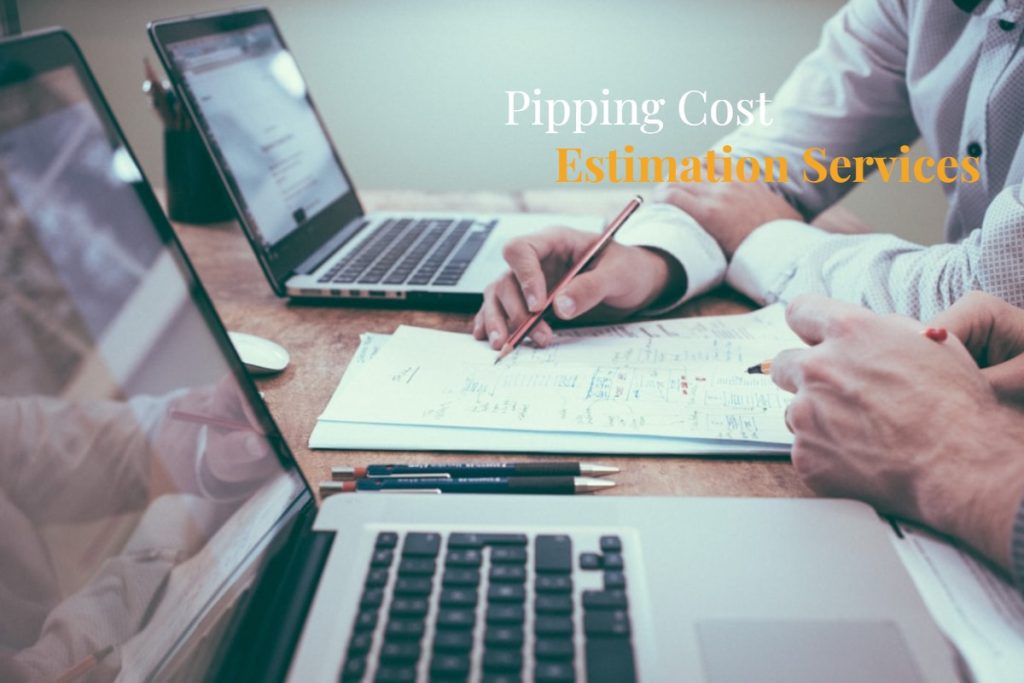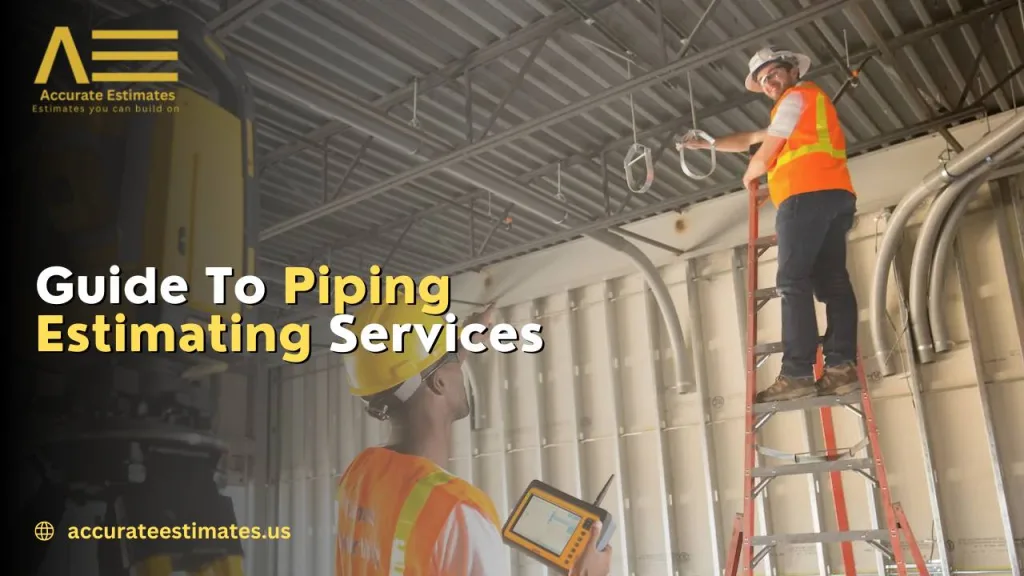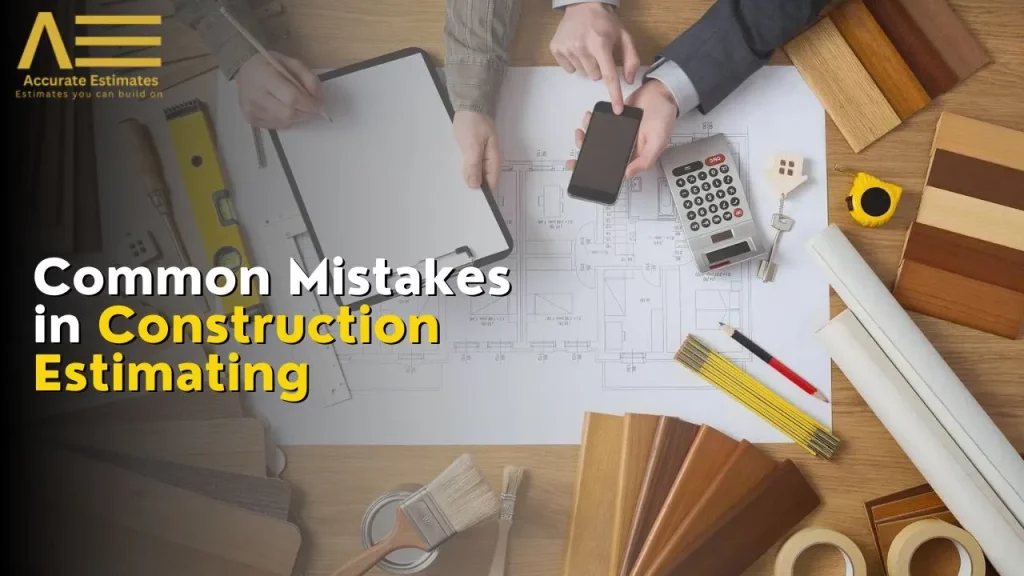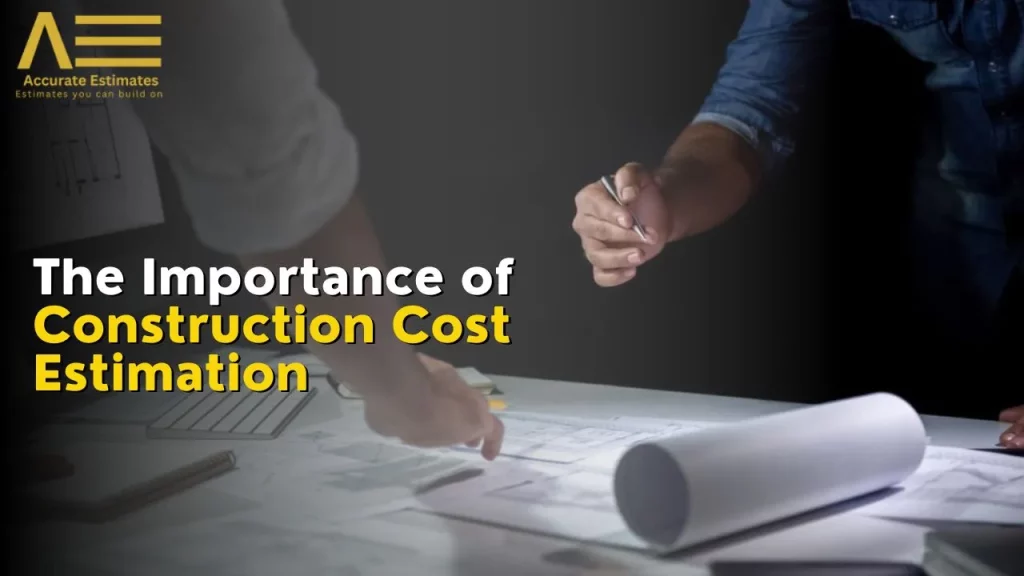Piping systems are the foundation of construction projects and are used to carry fluids, gases, and other materials for a variety of industrial and commercial uses. These systems are important for effectively running infrastructure from oil refineries to manufacturing plants, residential structures to skyscrapers.

However, predicting the prices of piping systems presents substantial issues because of the intricacies of material selection, manpower needs, and project parameters. Inaccurate estimates can result in costly errors, delays, and budget overruns, emphasizing the necessity of exact cost estimating in piping projects. These estimate services address these issues by providing experience, efficiency, and accuracy in calculating project costs.
Pipping Cost Estimation Services
Piping estimating services provide a range of innovative solutions to predict the costs estimation with piping projects efficiently. These services typically include material takeoff, labor estimating, and cost analysis. The process begins with gathering project information, including drawings, specifications, and relevant documentation. Material takeoff involves identifying and determining the piping materials required for the project, considering factors such as size, type, and quantity.

Labor estimating entails calculating the quantity of time and resources as they are necessary for the installation, and we must consider factors such as complexity, site conditions, and workforce efficient use of resources for optimal results and estimation. Finally, pricing factors such as material costs, labor rates, and overhead are applied to generate comprehensive cost estimates.
Benefits of Using Piping Estimating Services
The utilization of piping estimating services offers several advantages for construction projects:
- Improved accuracy of project costs: By leveraging industry expertise and advanced tools, piping estimating services can provide more precise cost estimates, reducing the risk of underbidding or overspending.
- Increased efficiency: Outsourcing estimating tasks to specialized services saves time and resources compared to in-house estimation processes, allowing project teams to focus on core activities.
- Expertise and experience: Piping estimating services enlist adept professionals with extensive insights into industry standards, guaranteeing top-notch and dependable cost assessments.
- Better project planning and budgeting: Precise cost estimations empower project stakeholders with the knowledge to make well-informed decisions about project scope, resource distribution, and scheduling, ultimately resulting in enhanced project outcomes.
- Enhanced competitiveness: Contractors strengthen their prospects of securing project awards and lucrative contracts by offering precise and competitive bids.
- Reduced risk of errors and omissions: Thorough and systematic estimation processes minimize the likelihood of costly mistakes, mitigating potential delays and cost overruns during project execution.
Choosing a Piping Estimating Service Provider
When selecting a piping estimating service provider, it is essential to consider several factors to ensure the best possible outcomes for your project:
- Experience: Look for providers with a proven track record in your specific industry or sector, as they will have relevant expertise and insights into project requirements and challenges.
- Range of services offered: Assess the provider’s capabilities in terms of their services, such as material takeoff, labor estimating, cost analysis, and project management support.
- Software and technology: Ensure the provider utilizes advanced tools to enhance accuracy, efficiency, and collaboration throughout the estimation process.
- Communication and collaboration: Choose a provider that demonstrates clear communication and collaboration skills, as effective coordination with project stakeholders is essential for success.
- Cost structure and pricing models: Evaluate the provider’s pricing structure to ensure it aligns with your budget and project requirements, whether a fixed fee, hourly rate, or other pricing model.
- References and reviews: Seek recommendations and reviews from past clients to gauge the provider’s reputation, reliability, and customer satisfaction levels.
Cost-Saving Strategies for Piping Estimating
To optimize piping estimates and reduce project costs, consider the following strategies:
- Standardize estimating procedures: Establish standardized procedures and templates for estimating tasks to promote consistency, efficiency, and accuracy across projects.
- Supplier collaboration: Develop strong relationships with suppliers and vendors to negotiate competitive pricing on materials and equipment, reducing overall project costs.
- Thorough research: Conduct comprehensive research and analysis to obtain accurate and up-to-date information on material costs, market trends, and industry benchmarks.
- Performance analysis: Regularly review and analyse past projects to identify patterns, trends, and opportunities for improvement, enabling continuous refinement of estimating processes.
- Value engineering: Explore techniques to optimize piping design and specifications without compromising functionality or quality, maximizing cost-effectiveness.
Emerging Trends in Piping Estimating Technology:
- 3D modelling: Adopting advanced 3D modelling techniques allows for more accurate visualization, analysis, and coordination of piping systems, reducing errors and improving project outcomes.
- Cloud-based software: The shift towards cloud-based estimating software enables real-time collaboration, data sharing, and accessibility across project teams, enhancing communication and efficiency.
- Building Information Modelling (BIM): BIM technology facilitates the integration of piping systems into comprehensive digital models of buildings and infrastructure, enabling better coordination, clash detection, and lifecycle management.
Conclusion
Accurate cost estimation is critical for the successful planning, execution, and completion of piping projects. Piping estimating services offer a reliable solution to the challenges associated with estimating project costs and providing expertise, efficiency, and accuracy to stakeholders. By leveraging the benefits of professional estimating services, construction companies can enhance project outcomes, mitigate risks, and gain a competitive edge in the marketplace. As such, it is essential for project stakeholders to carefully evaluate and select qualified piping estimating service providers to ensure the success of their projects.
Glossary of Commonly Used Piping Estimating Terms:
- Material takeoff: Identifying and quantifying the materials required for a piping project.
- Labor estimating: Calculating the hours and resources needed to install piping systems.
- Value engineering: A systematic approach to optimizing project design and specifications to maximize value and minimize costs.
- 3D modelling: Creating digital representations of piping systems in three dimensions, enabling visualization and analysis of complex geometries and configurations.
- Cloud-based software: Software applications and tools hosted on remote servers and accessed via the internet, offering scalability, flexibility, and collaboration capabilities.


